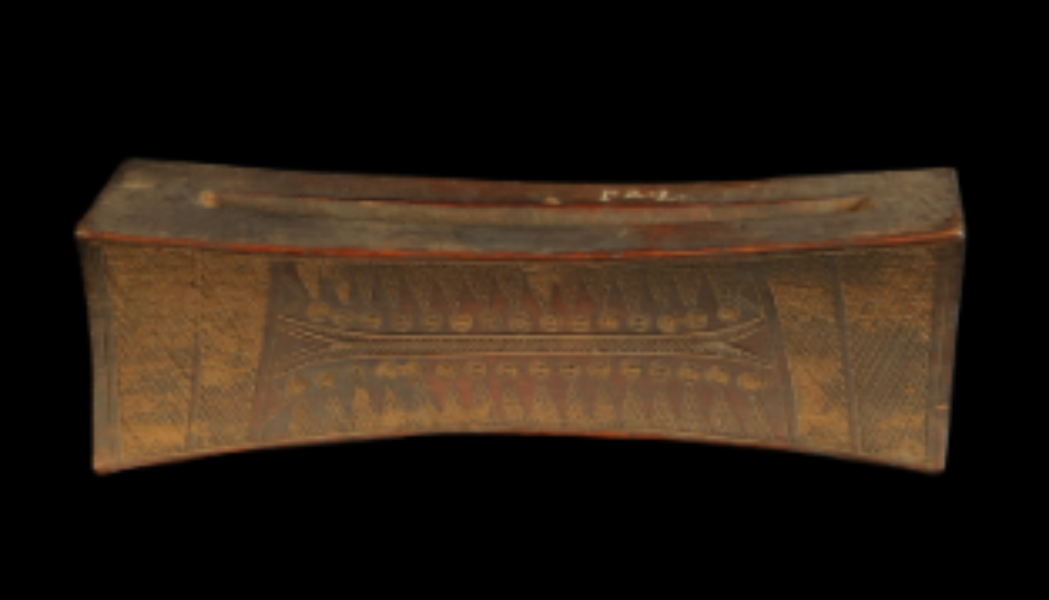State
Tribe Name
Art Type
short description
Fine cultural traditions of the indigenous Naga tribe inhabit Nagaland in the northeastern region of India. Among these traditions is the craft art of weapons and tools. One most important but less documented object among such types is the dao case, a wooden case made specifically to house and transport the traditional dao (curved blade weapon/tool).
Thumbnail

Filter Postion
Left
Filter Background
Off
Theme
Filter Header Image

content
Image

description
Fine cultural traditions of the indigenous Naga tribe inhabit Nagaland in the northeastern region of India. Among these traditions is the craft art of weapons and tools. One most important but less documented object among such types is the dao case, a wooden case made specifically to house and transport the traditional dao (curved blade weapon/tool).
There is a rectangular piece of wood formed as a dao case. Intricately curved designs adorn its dorsal (upper) surface that speak of the artistic expression and identity of Naga society. Typically fashioned with two slits at the lateral ends, to receive the dao blade perfectly and hold it in suspension, the slits keep the dao in position, thus securing it, and allows its easy transportation.
Made up of very tough local wood, the dao case itself cools the blade besides giving it an aesthetic and cultural dimension. These carry designs of typical motifs and symbols representing tribal identity, bravery, and heritage (Hutton, 1921). The workmanship illustrates the close bond Naga people share with their tools which they revere.
While Naga tribal warfare and among farmers who used the blade regularly ensured that it was carried safe and ready for use when traversing hilly terrain, those days are long gone. Much of such material can now be found in museums like the Indian Museum in Kolkata, where it would once have provided some insights into the material culture of the Naga tribes.
There is a rectangular piece of wood formed as a dao case. Intricately curved designs adorn its dorsal (upper) surface that speak of the artistic expression and identity of Naga society. Typically fashioned with two slits at the lateral ends, to receive the dao blade perfectly and hold it in suspension, the slits keep the dao in position, thus securing it, and allows its easy transportation.
Made up of very tough local wood, the dao case itself cools the blade besides giving it an aesthetic and cultural dimension. These carry designs of typical motifs and symbols representing tribal identity, bravery, and heritage (Hutton, 1921). The workmanship illustrates the close bond Naga people share with their tools which they revere.
While Naga tribal warfare and among farmers who used the blade regularly ensured that it was carried safe and ready for use when traversing hilly terrain, those days are long gone. Much of such material can now be found in museums like the Indian Museum in Kolkata, where it would once have provided some insights into the material culture of the Naga tribes.
Image Mode
landscape
promoted
On
Verified
Off
